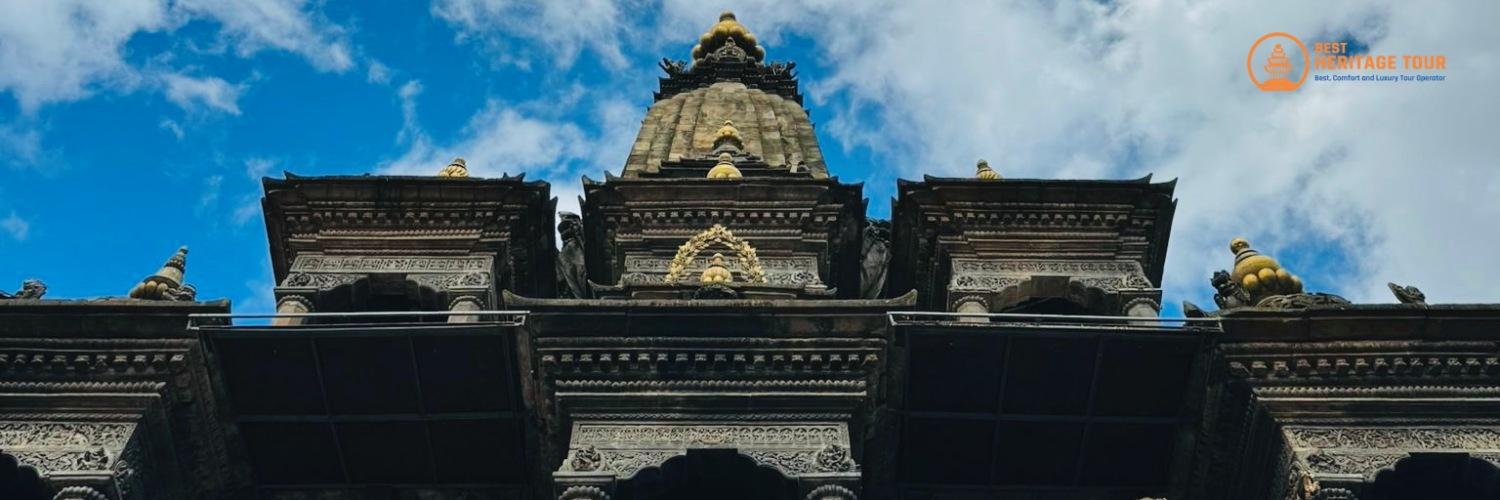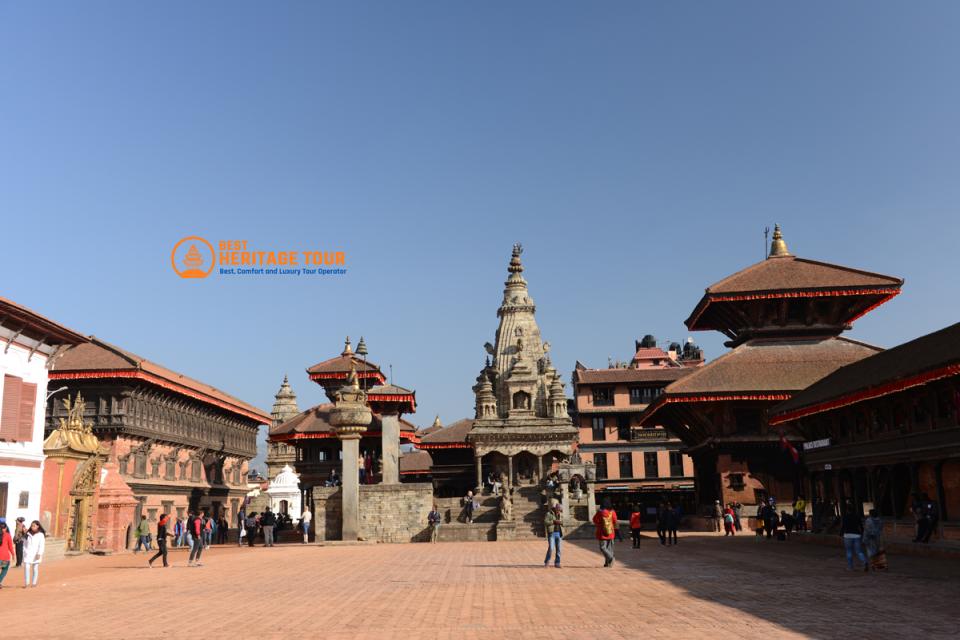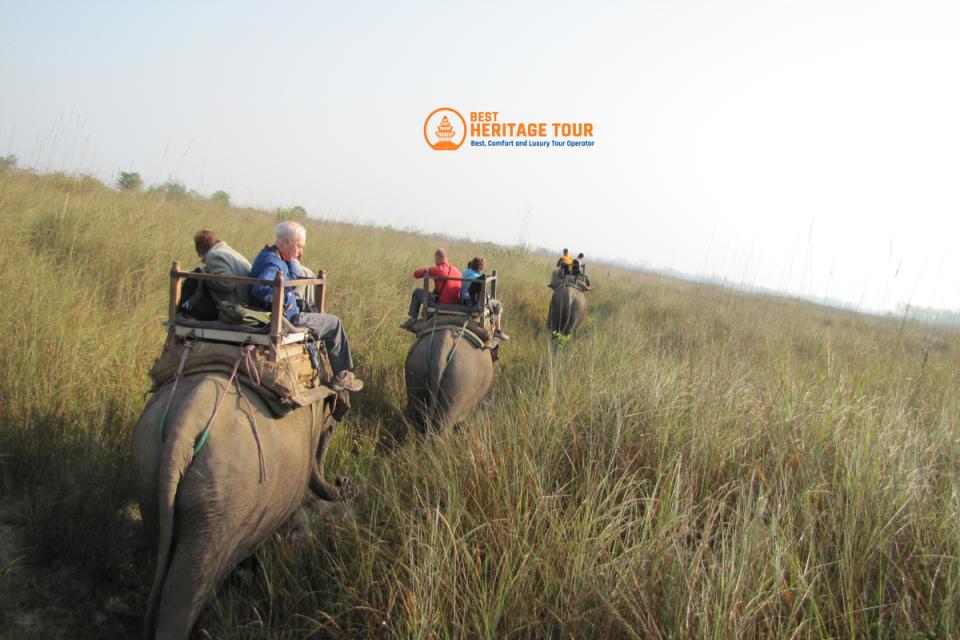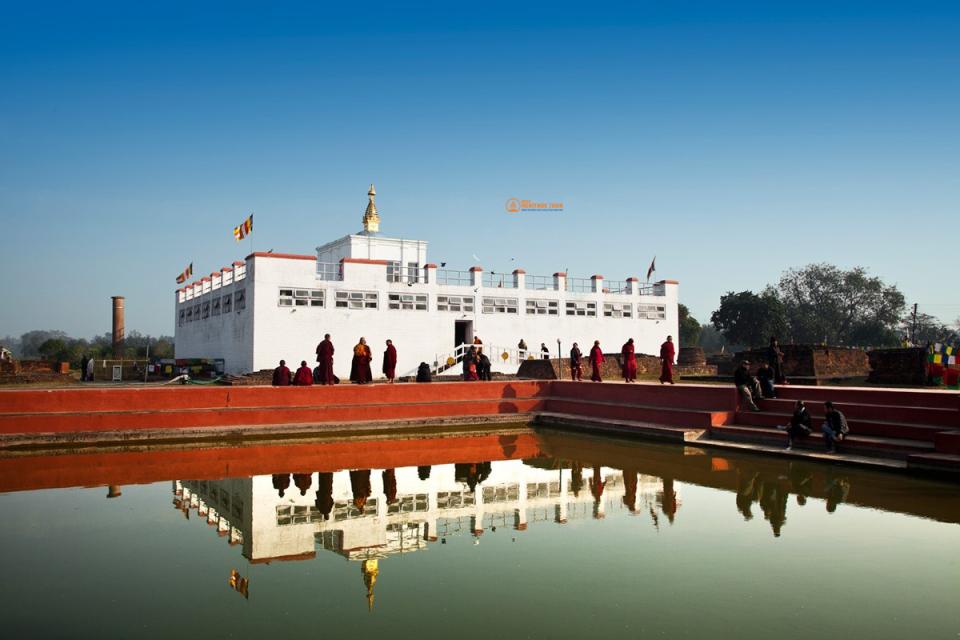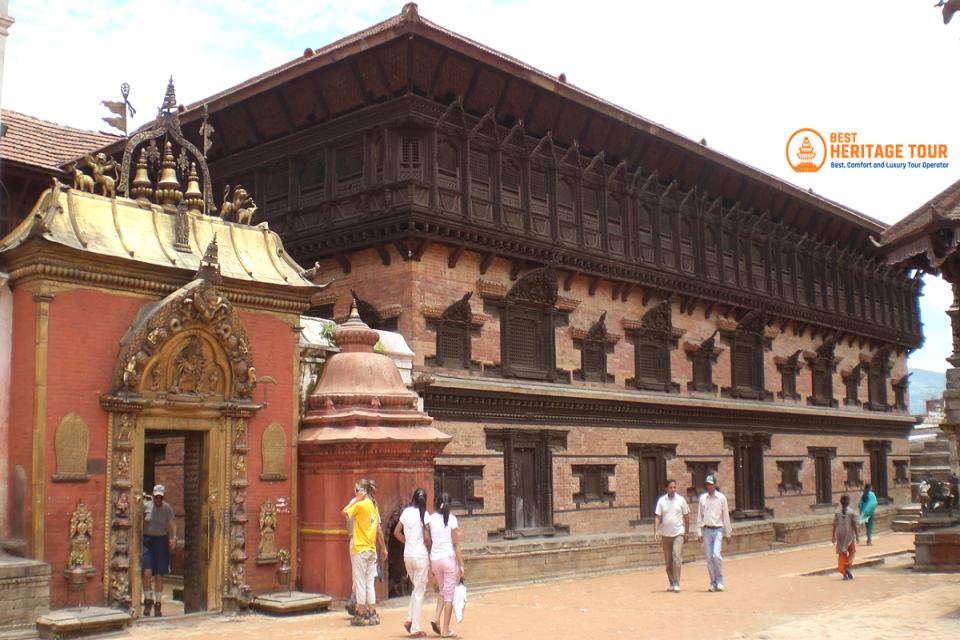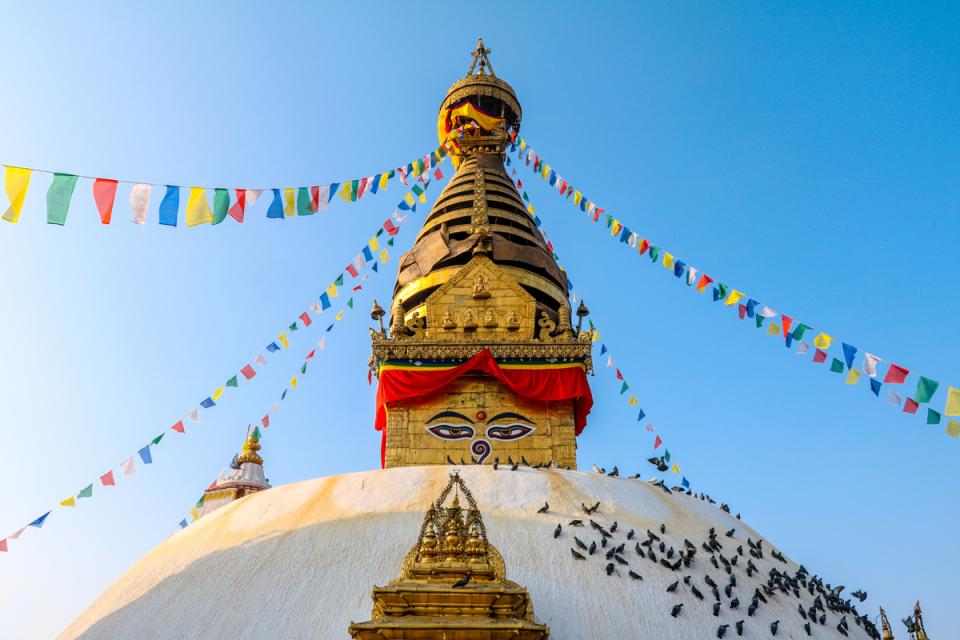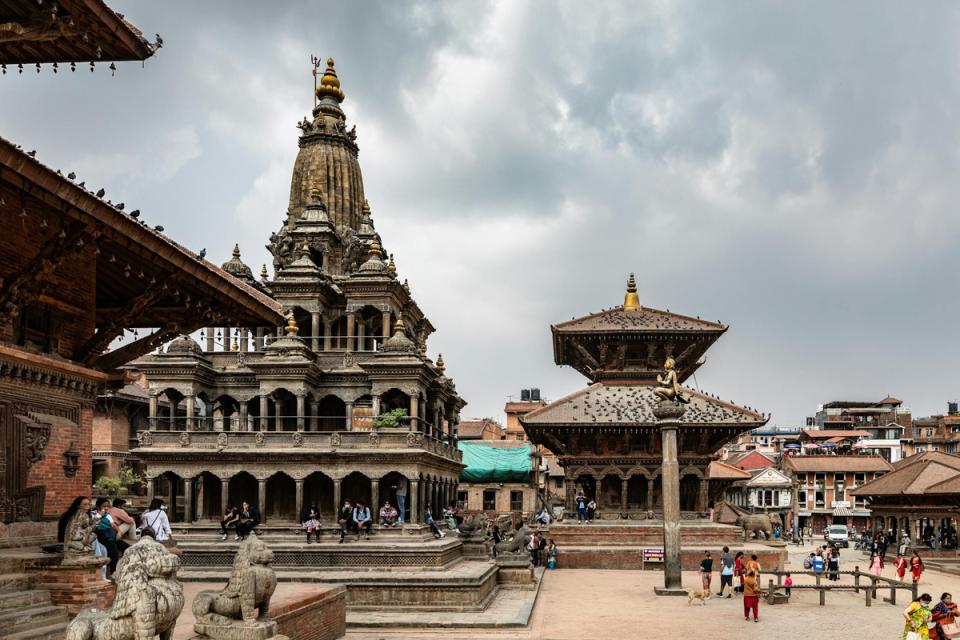Are you ready to explore the rich tapestry of culture, history, and natural beauty that Nepal offers? As home to some of the most remarkable UNESCO World Heritage Sites, Nepal invites travelers to embark on a journey like no other in 2025 and 2026. From the bustling streets of Kathmandu Valley, where centuries-old Newari architecture stands proudly, to the serene birthplace of Buddha in Lumbini, each site tells a unique story that connects us to ancient traditions and spiritual legacies.
Have you ever wondered how many UNESCO sites Nepal actually has or which ones are the best to visit during your trip? Whether you’re planning a detailed Nepal UNESCO itinerary or simply seeking inspiration for your next cultural adventure, this guide is crafted just for you. We’ll dive deep into iconic landmarks like Kathmandu Durbar Square, explore the sacred Maya Devi Temple, and trek through the breathtaking landscapes of Sagarmatha National Park, home to the legendary Everest Base Camp.
But this journey is more than sightseeing, it’s about responsible travel, supporting local communities, and experiencing Nepal’s heritage in a way that honors both its past and future. So, pack your curiosity and let’s uncover the best UNESCO World Heritage Sites Nepal has to offer in 2025/2026, ensuring your visit is both enriching and unforgettable.
Kathmandu Valley: The Cultural Heart of Nepal
Have you ever stepped into a place where every corner whispers stories of centuries gone by? Kathmandu Valley, the vibrant cultural hub of Nepal, is exactly that, a living museum and a UNESCO World Heritage Sites Nepal treasure trove. If you’re planning a Kathmandu Valley UNESCO tour in 2025, get ready to immerse yourself in a stunning blend of history, art, and spirituality.
Why Kathmandu Valley is a Must-Visit Heritage Destination
Kathmandu Valley is home to three spectacular Durbar Squares Kathmandu, Patan, and Bhaktapur - each showcasing the finest examples of Newari architecture in Kathmandu and unique cultural identities. Wondering what sets these squares apart? Here’s a quick guide:
- Kathmandu Durbar Square: The historic heart of Nepal’s capital, featuring ancient palaces, courtyards, and the iconic Taleju Temple. It’s also the site of vibrant festivals, especially in the dry season.
- Patan Durbar Square: Renowned for its exquisite craftsmanship and strong Buddhist influences, Patan showcases stunning temples, intricate metalwork, and artistic heritage that highlights the city’s spiritual richness.
- Bhaktapur Durbar Square: Known for its well-preserved medieval charm, Bhaktapur offers elaborate wood carvings, traditional pottery, and a timeless atmosphere that transports visitors to Nepal’s artistic and cultural past.
- Newari Architecture: The intricate woodwork, pagoda-style temples, and brick façades are vivid expressions of the valley’s Newar community, whose craftsmanship has shaped Kathmandu’s identity for centuries.
Best Time to Visit Kathmandu Valley
Timing your visit can enhance your experience. The best time to visit Kathmandu Valley is generally during the spring (March to May) and autumn (September to November), when the weather is pleasant and festivals fill the streets with color. Planning your trip around the Festivals at Kathmandu Durbar Square 2026 will add a magical cultural layer to your visit.
Tips for an Authentic Experience
- Take a guided tour to understand the historical significance behind each monument.
- Explore local markets nearby for traditional crafts and Newari cuisine.
- Respect cultural customs and help support ongoing UNESCO conservation efforts in Nepal by traveling responsibly.
Lumbini: Birthplace of Lord Buddha
Have you ever felt the pull of a place so profoundly spiritual that it seems to whisper peace with every breeze? Lumbini, the birthplace of Buddha, is exactly that kind of destination. Recognized as a UNESCO World Heritage Site, Lumbini offers more than just history, it invites you to experience the roots of Buddhism firsthand on a deeply personal journey.
Why Visit Lumbini in 2025/2026?
Lumbini is not only a pilgrimage site but also a vibrant center for cultural and spiritual exploration. Whether you’re seeking tranquility or fascinated by Buddhist history, this sacred site has something for everyone:
- Maya Devi Temple Visit: This ancient temple marks the exact spot where Queen Maya Devi gave birth to Prince Siddhartha Gautama. Walking through its ruins, you can almost feel the echoes of history and spirituality intertwined.
- Ashoka Pillar Historical Significance: Erected by Emperor Ashoka in the 3rd century BCE, the pillar stands as a testament to Buddhism’s spread and Nepal’s ancient role in world history.
- Buddhist Monasteries in Lumbini: Across the monastic zones, you’ll find serene temples and monasteries representing various Buddhist traditions from around the world, offering a unique multicultural spiritual atmosphere.
Planning Your Lumbini Pilgrimage Tour Nepal
To make the most of your visit:
- Best time to visit: October to March offers mild weather ideal for exploration.
- Getting there: Lumbini is accessible via flights or road trips from Kathmandu and Pokhara, with well-established tourist facilities.
- Cultural immersion: Attend local festivals or meditation sessions to deepen your experience beyond sightseeing.
Embracing Responsible Travel in Lumbini
Visiting a sacred site comes with responsibility. Supporting local communities and UNESCO conservation efforts ensures that Lumbini remains a beacon of peace and culture for generations to come. By traveling thoughtfully, you contribute to preserving the sanctity and heritage of this extraordinary place.
Sagarmatha National Park: Natural and Cultural Marvel
Are you ready to combine breathtaking natural beauty with rich cultural heritage on your next adventure? Sagarmatha National Park, a UNESCO World Heritage Site, offers exactly that an extraordinary experience that blends the awe of the Everest region biodiversity with the warmth of Sherpa culture.
What Makes Sagarmatha National Park So Special?
This park isn’t just about towering peaks and rugged landscapes; it’s a living mosaic of ecosystems and traditions that has earned global recognition. Here’s why it should be on your 2025/2026 travel list:
- Everest Base Camp UNESCO Site: Trekking to the base of the world’s highest peak is a bucket-list experience. Along the way, you’ll witness panoramic Himalayan vistas and explore ancient Sherpa villages rich in culture.
- Sherpa Culture in Sagarmatha: Meet the resilient Sherpa community, renowned for their mountaineering skills and vibrant traditions. Their monasteries and festivals offer deep insights into Himalayan spirituality.
- Everest Region Biodiversity: Beyond the mountains, the park shelters rare species like the snow leopard, red panda, and Himalayan tahr, making it a paradise for nature lovers and photographers alike.
Planning Your Trek and Visit
To make your visit seamless and unforgettable:
- Best treks in Sagarmatha National Park: Besides Everest Base Camp, consider the Gokyo Lakes trek or the Three Passes trek for varied experiences.
- Best seasons: Autumn (September to November) and spring (March to May) provide clear skies and moderate temperatures ideal for trekking.
- Safety and permits: Secure necessary permits such as the Sagarmatha National Park entry permit and the TIMS card. Hiring local guides supports responsible tourism and enriches your experience.
Embracing Responsible Tourism
Visiting Sagarmatha means embracing responsible travel to Nepal UNESCO sites. Supporting local conservation efforts helps preserve this fragile environment and the Sherpa way of life. Plus, your eco-conscious choices contribute to carbon-neutral tours and sustainable trekking practices.
Chitwan National Park: Wildlife and Heritage Experience
Have you ever dreamed of wandering through dense forests where wild rhinos roam freely, and ancient cultures thrive side by side with nature? Chitwan National Park, a UNESCO World Heritage Site, offers exactly that a perfect blend of wildlife adventure and cultural heritage in the heart of Nepal.
What Makes Chitwan a Unique UNESCO Site?
More than just a national park, Chitwan is a living example of biodiversity conservation combined with rich indigenous traditions. Here’s why it’s an essential stop on your 2025/2026 itinerary:
- Chitwan Wildlife Safari: Get up close with endangered species like the one-horned rhinoceros, Bengal tiger, and elusive gharial crocodile on guided jeep safaris or thrilling canoe rides along the Rapti River.
- Tharu Culture and Heritage: The indigenous Tharu community has lived in harmony with the park’s environment for centuries. Visiting their villages offers a fascinating glimpse into traditional lifestyles, dances, and crafts.
- Eco-tourism in Chitwan Nepal: Responsible travel practices here help protect wildlife habitats and empower local communities, making your visit both meaningful and sustainable.
Planning Your Visit to Chitwan
To enjoy a rewarding and responsible visit:
- Best time to visit: October to March provides the best weather for wildlife spotting and outdoor activities.
- Safari options: Choose from jeep safaris, elephant-back rides, or walking tours led by expert naturalists.
- Supporting local communities: Participate in community-based tourism initiatives to contribute directly to conservation and cultural preservation.
Why Responsible Travel Matters Here
Chitwan National Park exemplifies how carbon-neutral tours in Chitwan and sustainable practices can preserve Nepal’s natural and cultural treasures. Your eco-friendly choices support ongoing UNESCO conservation efforts Nepal, ensuring future generations can enjoy this incredible heritage.
So, are you ready to experience the wild beauty and vibrant culture of Chitwan? This unique blend of nature and heritage awaits to enrich your Nepal journey like no other.
Other Hidden UNESCO Gems in Nepal worth Exploring
Are you curious about uncovering Nepal’s lesser-known UNESCO World Heritage Sites that offer unique stories and stunning experiences beyond the usual highlights? While Kathmandu Valley, Lumbini, Sagarmatha, and Chitwan attract most visitors, Nepal’s heritage map is dotted with hidden treasures that enrich any itinerary.
Discover Nepal’s Hidden Heritage Treasures
These off-the-beaten-path sites provide fascinating glimpses into Nepal’s diverse history and culture:
- Pashupatinath Temple: Not just a religious site but a vibrant cultural hub where you can witness ancient Pashupatinath Temple rituals. The temple’s sacred ghats along the Bagmati River create a deeply spiritual atmosphere that captures the essence of Hindu devotion.
- Boudhanath Stupa: Famous among photographers and spiritual seekers alike, this colossal stupa is one of the largest in the world. With its colorful prayer flags and rhythmic circumambulations, it offers immersive insight into Tibetan Buddhism and the chance to capture mesmerizing moments through your lens.
- Swayambhunath Stupa (Monkey Temple): Perched atop a hill with panoramic views of Kathmandu, Swayambhunath is a harmonious blend of Buddhist symbolism and Hindu mythology. Its all-seeing eyes, fluttering prayer flags, and playful monkeys create a mystical atmosphere perfect for spiritual reflection and striking photography.
- Changu Narayan Temple: Nepal’s oldest Hindu temple, Changu Narayan is a hidden gem surrounded by lush hills and ancient legends. The temple’s exquisite Licchavi-era carvings and peaceful setting offer a journey through Nepal’s architectural and religious history, far from the usual tourist trail.
Why Include These Sites in Your Nepal UNESCO Itinerary?
- Cultural richness: Experience a broader spectrum of Nepalese traditions and religious practices.
- Less crowded: Enjoy a more intimate and relaxed visit, perfect for families and travelers seeking tranquility.
- Support local communities: Your visit helps sustain heritage conservation and empowers local artisans and guides.
Planning Your Visit
- Combine these sites with major destinations for a balanced itinerary.
- Engage in guided tours to gain deeper historical and cultural context.
- Time your visit during local festivals to witness vibrant celebrations and rituals.
Planning Your Visit: Tips for Exploring Nepal’s UNESCO World Heritage Sites
Feeling inspired to explore Nepal’s rich heritage in 2025/2026? Proper planning can transform your trip from good to unforgettable. Let’s look at essential tips to help you navigate these incredible UNESCO World Heritage Sites smoothly and meaningfully.
How to Make the Most of Your Nepal UNESCO Sites Tour
Visiting multiple heritage sites requires thoughtful organization. Here are key pointers to keep in mind:
- Create a balanced itinerary: Consider starting with Kathmandu Valley’s iconic sites like Kathmandu Durbar Square, then explore Lumbini’s spiritual calm, followed by nature and culture in Sagarmatha and Chitwan.
- Choose the best seasons: Plan your visits during the Nepal UNESCO sites best season 2025, mainly autumn (September to November) and spring (March to May), for pleasant weather and clear skies.
- Book guided tours for Nepal heritage sites: Local guides enrich your experience with historical insights and help navigate lesser-known gems safely.
Practical Tips for Travel and Accommodation
- Transport options: Domestic flights, tourist buses, and private cars offer flexibility, choose based on your budget and time.
- Accommodation choices: From boutique hotels in Kathmandu to eco-friendly lodges near Sagarmatha and Chitwan, pick options that support sustainable tourism and local communities.
- Permits and fees: Some sites, like Sagarmatha National Park, require permits. Check ahead to avoid surprises.
Respecting Local Customs and Supporting Conservation
Visiting sacred and protected sites means embracing responsible travel to Nepal UNESCO sites:
- Dress modestly and follow local guidelines at religious and cultural sites.
- Avoid plastic waste and support carbon-neutral tours when possible.
- Purchase souvenirs from local artisans to contribute directly to community livelihoods.
Conclusion
As you wrap up your journey through Nepal’s remarkable UNESCO World Heritage Sites, have you begun to imagine the stories, cultures, and landscapes waiting to be explored firsthand? From the bustling squares of Kathmandu Valley to the serene pilgrimage grounds of Lumbini, and from the majestic peaks of Sagarmatha National Park to the wild jungles of Chitwan, Nepal offers a tapestry of experiences that enrich both your mind and soul.
Planning your trip with an eye toward responsible travel and sustainable tourism ensures that these treasures remain vibrant for generations to come. By choosing guided tours, supporting local communities, and embracing carbon-neutral options, you contribute directly to the preservation of Nepal’s heritage and biodiversity. Isn’t that a journey worth taking?
Whether you’re a seasoned traveler or embarking on your first Nepal adventure, the best UNESCO sites in Nepal 2025 and 2026 invites you to connect deeply with history, culture, and nature. So, why wait? Start crafting your Nepal UNESCO itinerary today, and prepare to create unforgettable memories in one of the world’s most extraordinary destinations.
Ready for Your Journey? With these tips, your exploration of Nepal’s UNESCO World Heritage Sites will be richer, smoother, and more impactful. To make your trip effortless and truly immersive, consider partnering with a trusted tour operator like Best Heritage Tour. They specialize in culturally respectful, eco-conscious itineraries that highlight Nepal’s heritage treasures while supporting local communities.
Contact Us Today for Bookings & Information:
-
Phone/WhatsApp/Viber: +9779851149197 / +9779810043046
-
Email: bestheritagetour@gmail.com / info@bestheritagetour.com
-
Website: www.bestheritagetour.com
-
Location: Thamel Marg, Kathmandu, Nepal
Pack your curiosity and respect, and get ready to experience Nepal’s unparalleled cultural and natural heritage in 2025/2026!
Author: Best Heritage Tour
Date: 26th May, 2025

